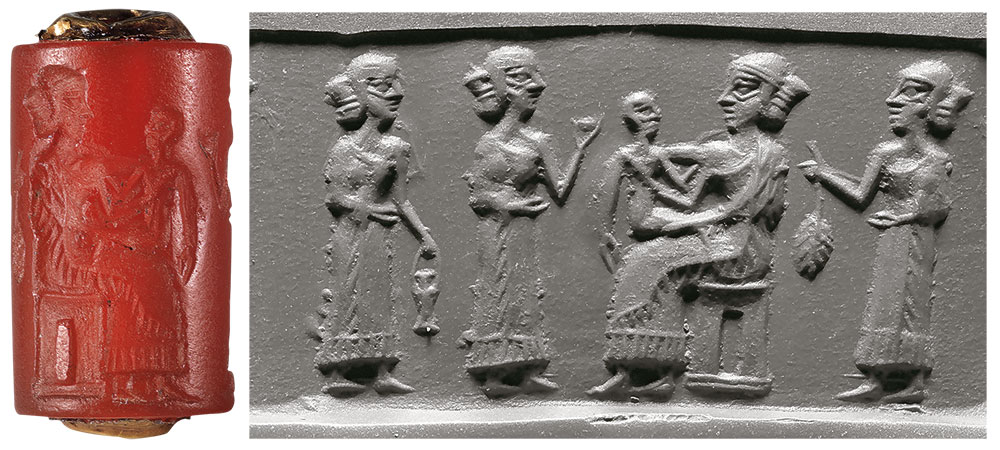
This carnelian seal features an exceptional depiction of a mother and child. A similar motif of a goddess with a child in her lap is seen in other Akkadian cylinder seals, but this woman is not divine: her coiffure and fringed dress match those of the three mortal women in the scene. These women, attendants, look toward the seated pair and present offerings of fronds and vessels. The mother looks lovingly at her child, emphasizing her role as caretaker; the little one gazes back at her adoringly.
Cylinder seal (and modern impression) with mother and child attended by women
Mesopotamia, Akkadian, Ur (modern Tell el-Muqayyar),
PG 871
Akkadian period (ca. 2334–2154 BC)
Carnelian and gold
University of Pennsylvania Museum of Archaeology and Anthropology, Philadelphia, USA, Excavated 1928; B16924
Courtesy of the Penn Museum
Sidney Babcock: Excavated from the ancient city of Ur, this object is a rare example of a seal that has survived with its original gold caps mostly intact. In addition to the gold material, the stone itself is also significant. The scene was carved on carnelian, which may have been sourced from the Indian subcontinent. The stone is evidence that the Mesopotamians successfully established and maintained trade relations with distant regions. As for the scene, it is one of tenderness and nurturing. A mortal woman is depicted seated with a child in her lap while female attendants offer various gifts including a palm frond, a cup, and a large vessel. The mother holds her child with fondness, and they affectionately gaze at one another. Immortalized in stone, such scenes emphasize the veneration and importance of motherhood and the role of caretakers—both mortal and divine—in Akkadian society.
